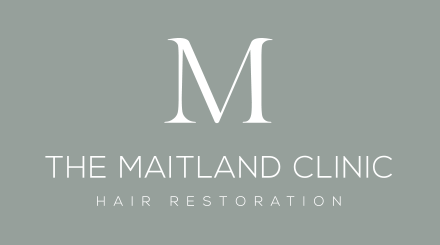Dr Bicer’s Consultant
Valued member
Hello,
Next to the hairline, the crown carries challenges when it comes to restoration. Challenges include creating the area's unique spiral pattern, the difficulty of achieving high density, the potential for ongoing hair loss, and restoring an only partially thinning crown.
Surface Area
The crown opens on all sides, and can rapidly expand in surface area, has an insatiable appetite for hair, potentially requiring more hair than the front and mid-scalp combined. Male pattern baldness is progressive; this creates issues when it comes to restoring the area. For example, the crown can expand down the back and sides of the head, doubling the surface area and encroaching into the traditional donor safe zone. Family hair loss history is a guide to your future hair loss pattern, but only a guide. It is often prudent to consider the long-term use of a hair loss treatment, even in conjunction with a hair transplant.
Planning Restoration
Crown restoration as a first procedure is not too common. Largely as the hairline impacts how someone looks and changes their appearance. While it is possible there are exceptions that are age related and whether the hair growth is stable, but for a candidate with an active hair loss gene the risk is greater. Risks include the crown continues to expand, causing a halo of no hair around the treated area. Or, overloading the crown with too much hair, reducing the remaining donor resource, potentially hampering maintaining a natural hair coverage and density over other areas.
Hair Growth Pattern
The spiral, or whorl pattern is unique to the crown, the angle of hairs around the crown spiral varies, with the hair shaft exiting the scalp at acute angles near the centre and becoming more perpendicular further away from the centre of the spiral. This helps to blend naturally with the surrounding hair coverage. Incorrect graft placement can result in wrong angles, creating styling issues, not blending with the surrounding hair, and an uneven hair density resulting in an unnatural appearance.
Crown Hair Density
The donor hair characteristics influenced the hair density placed in the crown, including the crown surface area and general donor hair management. Technically, it is harder to achieve high density in the crown compared to the frontal scalp. The placed density often varies between the perimeter of the crown an inner area. While it´s impossible to match the hair density of a natural full head of hair, the temptation should not be to keep adding a little more, and a little more.
Risks
Crowns regularly only initially thin, even though there is a visible shadow of hair loss, maintaining a thinner hair coverage over the area. Overtime, the hair recedes resulting in no hair growth or an open crown. Transplanting into an area with existing, albeit thinning hair carries a risk of temporary shedding of the pre-existing hairs, known as shock loss. Often the use of a treatment such as minoxidil for months after surgery to pre-empt the risk.
Healing & Hair Growth
Post-op healing, and hair regrowth compared to the frontal and mid-scalp can be slower. The crown's lower vascularity can mean to fully mature compared to the frontal mid-scalp being around 12 months, a crown may need 18 months to fully mature.
Dr Bicer is a firm believer in educating, and this extends to patient expectations being important. Your suitability depends on the extent of your hair loss, how active is hair loss, and future hair loss concerns, whether long-term medications is an option, and understanding how hair characteristics play a key role.
Next to the hairline, the crown carries challenges when it comes to restoration. Challenges include creating the area's unique spiral pattern, the difficulty of achieving high density, the potential for ongoing hair loss, and restoring an only partially thinning crown.
Surface Area
The crown opens on all sides, and can rapidly expand in surface area, has an insatiable appetite for hair, potentially requiring more hair than the front and mid-scalp combined. Male pattern baldness is progressive; this creates issues when it comes to restoring the area. For example, the crown can expand down the back and sides of the head, doubling the surface area and encroaching into the traditional donor safe zone. Family hair loss history is a guide to your future hair loss pattern, but only a guide. It is often prudent to consider the long-term use of a hair loss treatment, even in conjunction with a hair transplant.
Planning Restoration
Crown restoration as a first procedure is not too common. Largely as the hairline impacts how someone looks and changes their appearance. While it is possible there are exceptions that are age related and whether the hair growth is stable, but for a candidate with an active hair loss gene the risk is greater. Risks include the crown continues to expand, causing a halo of no hair around the treated area. Or, overloading the crown with too much hair, reducing the remaining donor resource, potentially hampering maintaining a natural hair coverage and density over other areas.
Hair Growth Pattern
The spiral, or whorl pattern is unique to the crown, the angle of hairs around the crown spiral varies, with the hair shaft exiting the scalp at acute angles near the centre and becoming more perpendicular further away from the centre of the spiral. This helps to blend naturally with the surrounding hair coverage. Incorrect graft placement can result in wrong angles, creating styling issues, not blending with the surrounding hair, and an uneven hair density resulting in an unnatural appearance.
Crown Hair Density
The donor hair characteristics influenced the hair density placed in the crown, including the crown surface area and general donor hair management. Technically, it is harder to achieve high density in the crown compared to the frontal scalp. The placed density often varies between the perimeter of the crown an inner area. While it´s impossible to match the hair density of a natural full head of hair, the temptation should not be to keep adding a little more, and a little more.
Risks
Crowns regularly only initially thin, even though there is a visible shadow of hair loss, maintaining a thinner hair coverage over the area. Overtime, the hair recedes resulting in no hair growth or an open crown. Transplanting into an area with existing, albeit thinning hair carries a risk of temporary shedding of the pre-existing hairs, known as shock loss. Often the use of a treatment such as minoxidil for months after surgery to pre-empt the risk.
Healing & Hair Growth
Post-op healing, and hair regrowth compared to the frontal and mid-scalp can be slower. The crown's lower vascularity can mean to fully mature compared to the frontal mid-scalp being around 12 months, a crown may need 18 months to fully mature.
Dr Bicer is a firm believer in educating, and this extends to patient expectations being important. Your suitability depends on the extent of your hair loss, how active is hair loss, and future hair loss concerns, whether long-term medications is an option, and understanding how hair characteristics play a key role.


























